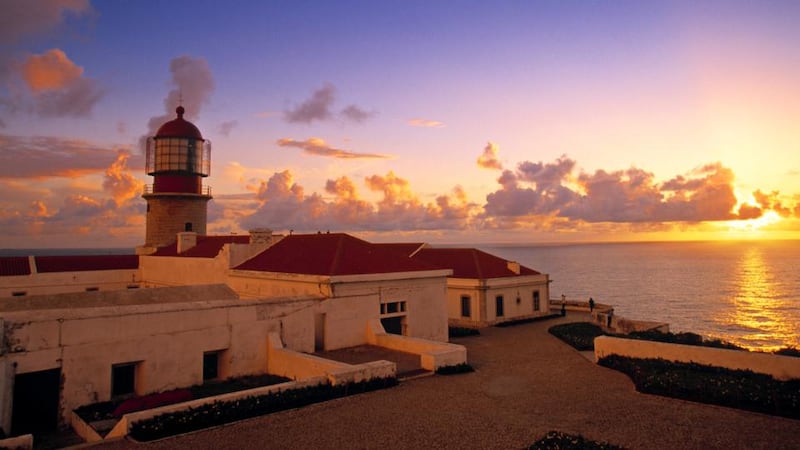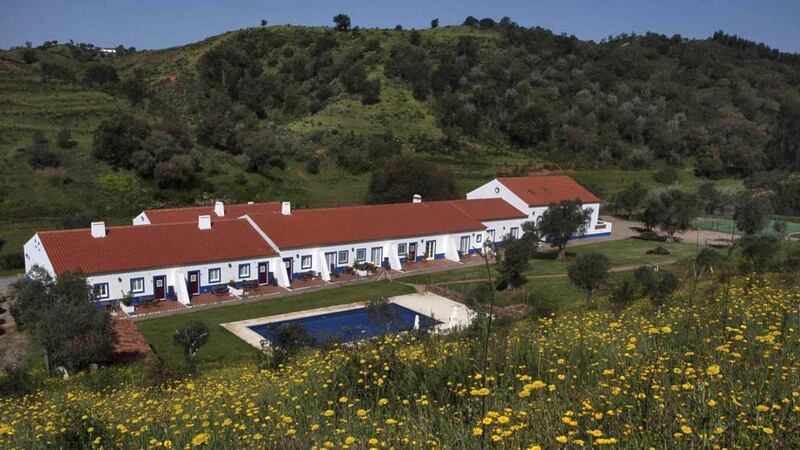Excruciating is how people describe the pain you feel when you step on the spines of a Weaver fish. Imagine my delight when said fish appeared on the menu in a fish restaurant, on the west coast of Portugal. Time for revenge. Could anything so dangerous possibly taste good? Yes, is the answer. They are delicious. If a restaurateur in Ireland would pay a bounty to every surfer who brought him a few Weaver fish, we could soon be rid of the problem.
The restaurant in question was perched above a tiny harbour on the west coast of Portugal in the province of Alentejo. When the only guests are locals you know the food will be good.
Most Irish people head to Portugal for sun, glorious beaches and excellent wines. If they want a walking holiday, the Camino de Santiago or some of the Grandes Routes in France will spring to mind. Portugal, however, has its very own Grande Route called the Rota Vincentina, a 351km trail divided into 12 stages, varying in length from 12km to 25km.


In recent times another route, The Fishermen’s Trail, has been added. These extra sections hug the wild and rugged coastline, dropping down to tiny coves on tracks used by locals for fishing.
The Historical Trail, the original route, passes through towns and villages and can also be used by mountain bikers, which could make it appealing to families with teenagers who would be bored with just walking.
This south west corner of Europe, with 75,000 hectares of protected land and 110km of wild coastline, is a vast unspoiled region. Mindful of the need to promote tourism while at the same time protecting the fragile environment, local authorities and business people came up with the idea of a walking route.
This type of tourism would not require large hotels or expensive infrastructure but rather discreet signage, well maintained paths, and comfortable places for people to stay. Unlike rural Ireland, the Portuguese countryside is not dotted with houses, so accommodation would mainly be found in villages and towns.
The exception to this is the Casas Brancas, a network of houses, some old, some new, offering unique accommodation in totally unspoiled locations. These gorgeous homes would be the highlight of any stay. Many of them are picturesque farmhouses that have been extended and restored. Some have swimming pools or little swimming lakes – heaven after a long, hot walk. In the cooler months, weary walkers can look forward to log fires and a glass of wine.
While the anonymity of hotels appeals to many people, staying in someone else's home and hearing their story is so interesting. Arriving at the Herdade Da Estacada felt like driving into a home in Western Australia. The land was flat and the scent of eucalyptus filled the air, but the antique furniture, the silver lidded jugs, the blue porcelain plates hanging on the walls, gave the game away. This was the old world. There was history here. What secrets had the ancient well and the huge magnolia tree heard in their time?
Fed up with the rat race, David and Maria, our lively and chatty hosts, fled Lisbon in search of a simple environment in which to rear their family. Ostrich farming, their first venture, didn’t bring in enough cash so they turned instead to hosting guests and turning the land to good use.
Now, 12 years on, they are awaiting the harvest from the 14,000 umbrella pines planted quite a few years ago. The new sheep have arrived – thoroughbreds to be sold as breeders – and the goats are installed merely “to clean up the land”, as David explained.
Guests can choose to eat at the farm or their hosts will accompany them to the aforementioned fish restaurant Entrada da Barca, to advise and translate.
The owners of the Casa Branca Quinta do Chocalhinho had a very different story to tell. Taking life easy after life as a High Court judge seemed far too boring to Luis. He wasn't ready for the armchair just yet. He needed a project. His grandfather's old farmhouse, where he had spent many happy days as a child, seemed like the ideal place to set up a tourism business. Once he had persuaded his wife Margarita that it was a brilliant idea, they got themselves an architect and set to.
Within a year the old house had been reconfigured and the barns reborn as apartments. A swimming pool and tennis court were installed, 100-year-old olive trees were uprooted and replanted to form a beautiful entrance and thousands more were planted.
As with other Grandes Routes, the Rota Vincentina can be started at different places. It stretches from Cabo de San Vincente, the most southern tip of Portugal, to Santiago do Cacem, a city through which pilgrims have passed for centuries on their way to northern Spain.
This last or first section of the walk is an area dominated by cork trees which are so important for the local economy. These forests support an extraordinarily wide ranging eco system, unlike the imported oleanders and eucalypts which are taking over on some sections of this walk. Being an evergreen species, these trees provide food and shelter for a wide range of birds and insects. More than 50 different species of bird live here, as do wildcat, weasels and genet, a slender cat-like carnivore.
Both in these forests and further along the route, bee keepers avail of the great variety of plants to produce different flavours of honey.
The thick, dark honey from the strawberry tree, Arbutus unedo, is a far cry from the “blend of EU honeys” we often see on our supermarket shelves. No part of this tree goes to waste as the trunk and branches are used for firewood and charcoal and the delicious fruit to make jam and medrohno, a fiery spirit.
Each section of the Rota Vincentina is quite different. At times the landscape is flat farm land where sweet potatoes, peanuts, loquats, olives, oranges and lemons are the main crops. Along other sections of the route, the land rises and falls gently, meeting up with rivers of crystal clear water coming out of the hills. Alder, ash, Portuguese oak and tamarisk thrive in this climate, providing shelter from the sun in hot weather. Along the banks of the rivers holes show the presence of kingfishers, water voles and signal crayfish.
The Fisherman’s Trail, divided into four stages with walks of up to 22km, gives walkers the chance to experience the wide diversity of plants and bird life. Here, just as in Ireland, the power of the wind and waves sculpts the environment, but the dryness of the climate, with more than six months with little rain, means that plants have to be adaptable.
For birdwatchers, the mouth of the river Alzezur is a paradise. Storks, swifts, falcons, redstarts, the list of nesting birds is endless. In fact this southern corner of Europe provides the nature lover with so much to see, you could return again and again at different seasons and not see it all.
Down at Faro there are eco-tours by boat, where children delight in snorkelling around the shallow waters looking at sea horses or coming face to face with leaping dolphins or red legged flamingos.
Why choose the Rota Vincentina over any other walking route? Imagine a loaf of bread baked in a brick oven, with a thick crust and soft inside. Now picture the olive oil you’re going to dip it in, to eat with your clams or wild pork. Walking makes you hungry.

HOW TO . . . WALK PORTUGAL
WHEN TO GO September to May
WHERE TO STAY
Algarve, Faro:
Pousada do Palacio de Estoi.
Double room from €108 per night including breakfast, reservas@pousadasofportugal.com
Hotel Faro. Double room from €107 per night including breakfast, reservas@hotelfaro.pt
Alentejo:
Herdade da Estacada. Double room from €80 per night, estadedaestacada.com
Quinta do Chocalhinho. Double room from €75 per night, quintadochocalhinho.com
GETTING THERE
One way flights can be found for less than €50 from Dublin – slightly more from Cork, aerlingus.com
GETTING ABOUT
Walking Guide: Atalaia Walking, from €30. Eco Tour Faro, animaris.pt
Tours from €25









